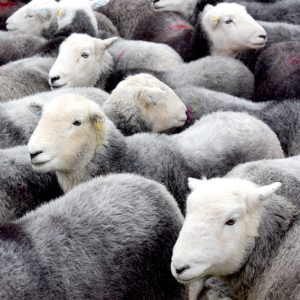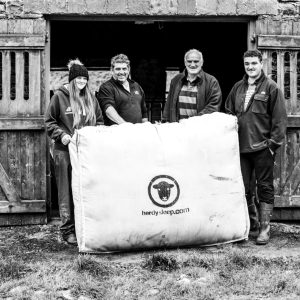The weeks from January until March are the longest, greyest and most testing of the year. They are the weeks when Herdwick sheep come into their own because in late winter on a Lake District Herdwick farm, the extremes of weather are more prevalent. Few other breeds of sheep would survive the winter here whilst carrying lambs in their bellies.
Late Winter On A Herdwick Sheep Farm
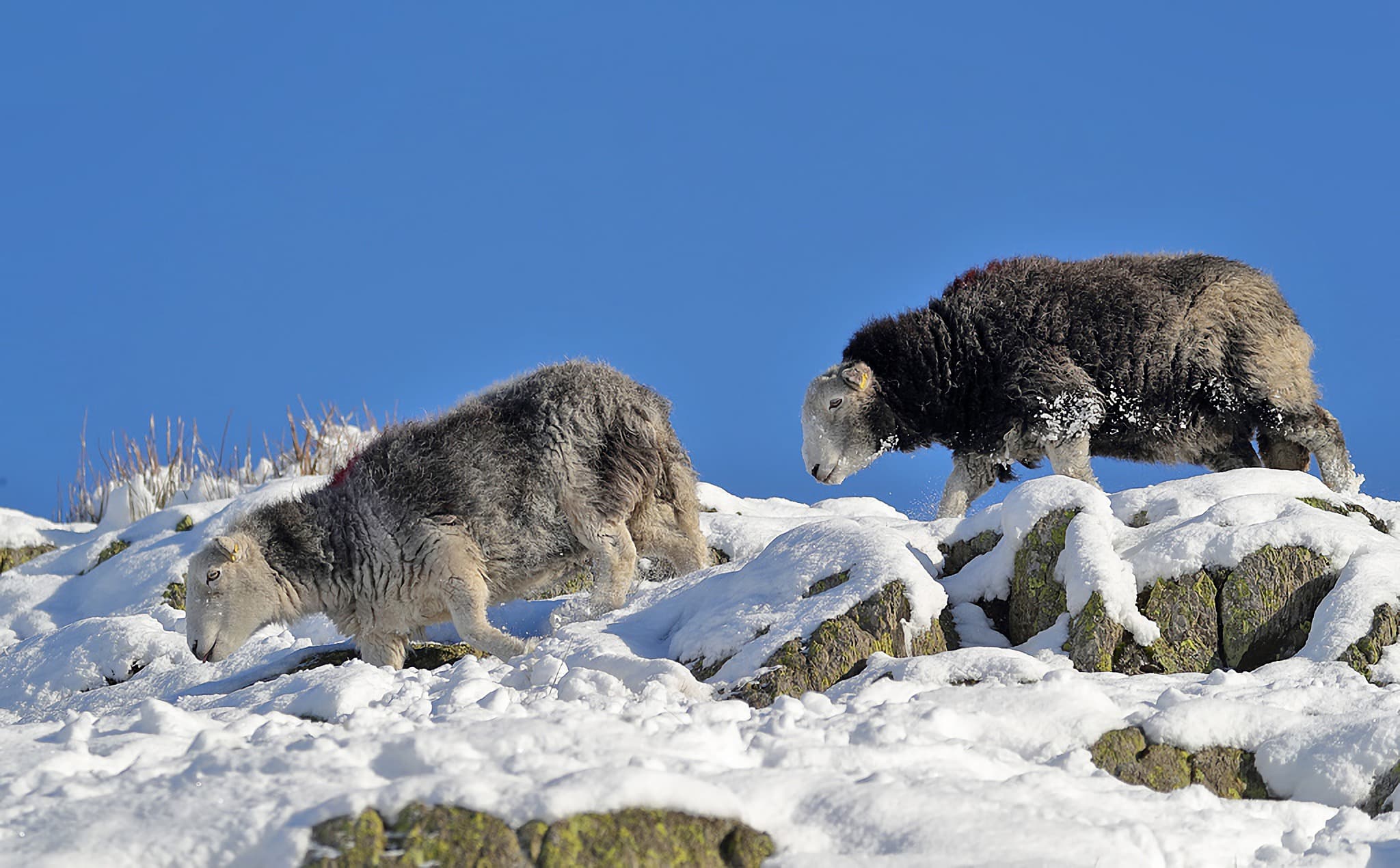
During this time the ewes are becoming heavier in lamb and their need for nutrition grows. They need hay and in the final weeks, some supplementary feeding.
Different kinds of weather have different effects on the ewes. The worst kind is deep snow that freezes, either trapping the ewes beneath drifts or forming a hard layer that stops them from getting anything to eat. Some of the oldest farmers talk of Herdwicks surviving for weeks in snow drifts during extreme winters, and more of them surviving than any other breed. They’ve been known to eat their own fleeces to survive.
Further reading: Mid-Winter on a Herdwick farm
Late winter: scanning for Herdwick lambs and managing the land
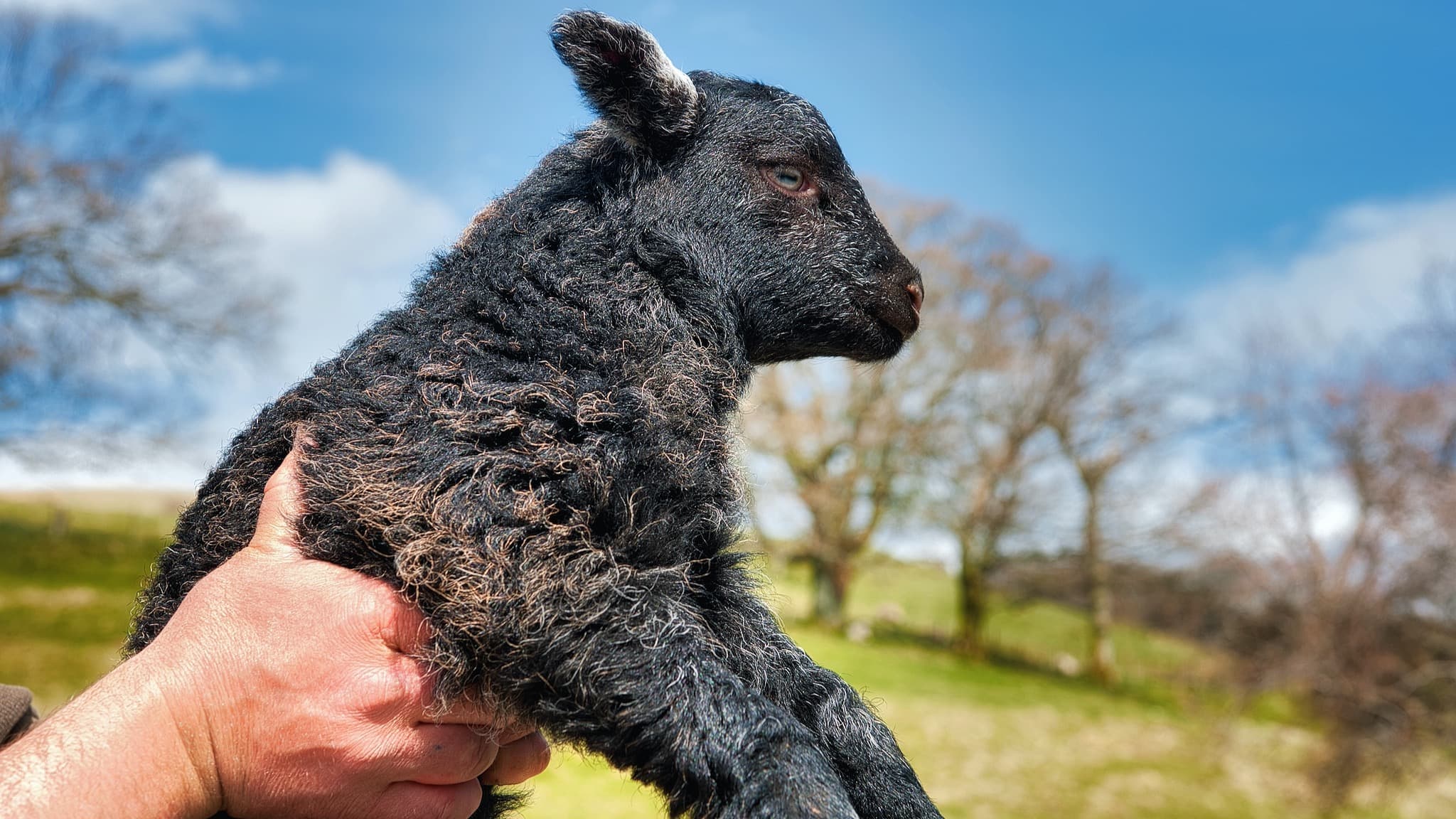
By March farmers have to be vigilant for any issues with the pregnant ewes; they scan (ultrascan) in January so they know which ewes have single and which have twins or triplets. Ewes with twins or triplets need more help as they are at risk of complications.
Scanning is a blur of activity as the person scanning gets paid by the sheep, so you have to be organised. They glare at a fuzzy grey screen, with one hand under the ewe’s belly, shout “single”, “twin”, or “triplet”, and a mark is quickly sprayed on the sheep’s back.
Further reading: Tupping time on a Herdwick farm
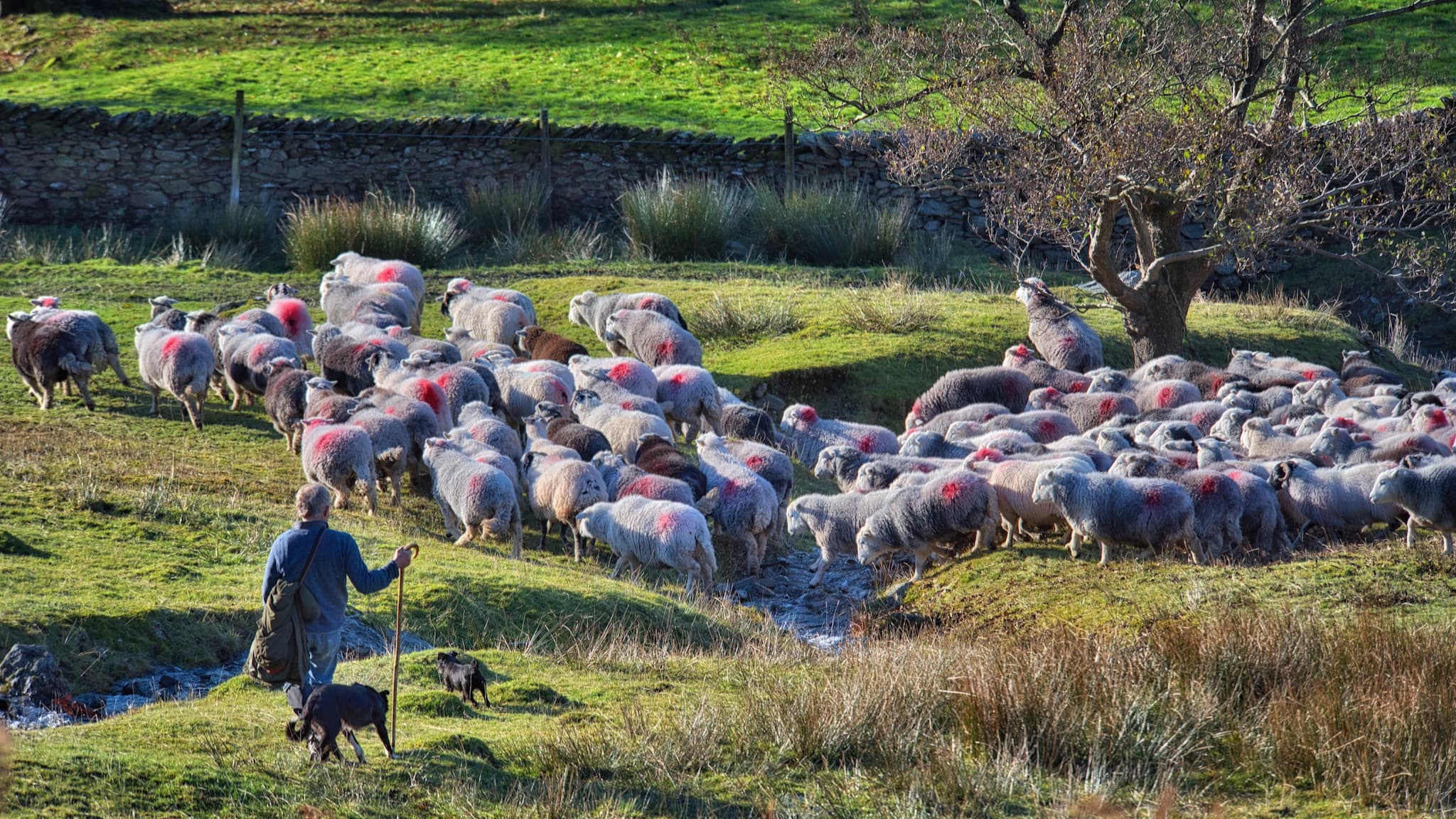
Lower hill ewes average about a lamb and a half each. A young hill ewe can manage fine with one lamb but two can be problematic on marginal land. Ideally, you don’t want triplets as it inevitably means little lambs that are at high risk of suffering from bad weather or needing to be taken off the mother at birth so she can have enough milk to rear the remaining ones.
Farmers try to manage the land so that some fields can freshen up with spring grass for the ewes and lambs in early April. They look nervously at the pile of big bales of hay, because the heap shrinks rapidly through the cold weeks. Most years it lasts into April with a little bit left, then the grass finally starts to grow and you curse having any left at all.
There is no better smell on a cold winter’s day than some good meadow hay: you can smell the summer in it. It’s a reminder of how critical the meadows in the valley bottoms are to farms.
The return of the wintered lambs
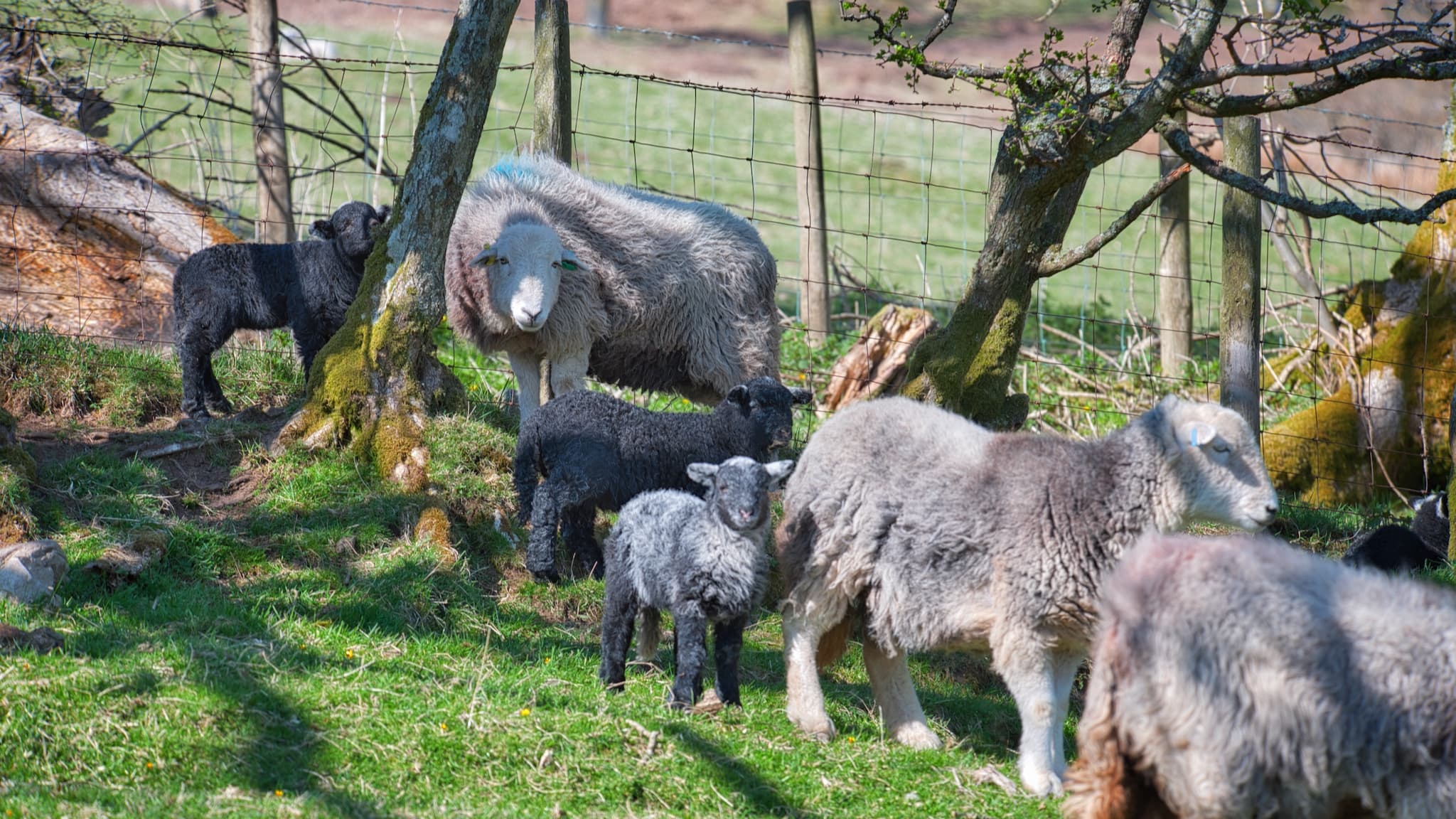
In early March the gimmer hoggs (last year’s ewe lambs) come back from their winter grazing.
Many centuries ago people travelled with the sheep (transhumance) but these days you commute to shepherd the sheep. Some graze down in the Eden valley but other young Herdwicks winter as far away as Anglesey. They have done this for countless centuries and need to because of the lack of grass on the fells in winter; they need to grow up somewhere where there is sufficient nutrition.
The gimmer hoggs come back nice and fat with their heads and legs whitening nicely, maturing to look like their mothers. Their fleeces are still the colour of black chocolate.
Supporting the Lake District farmer
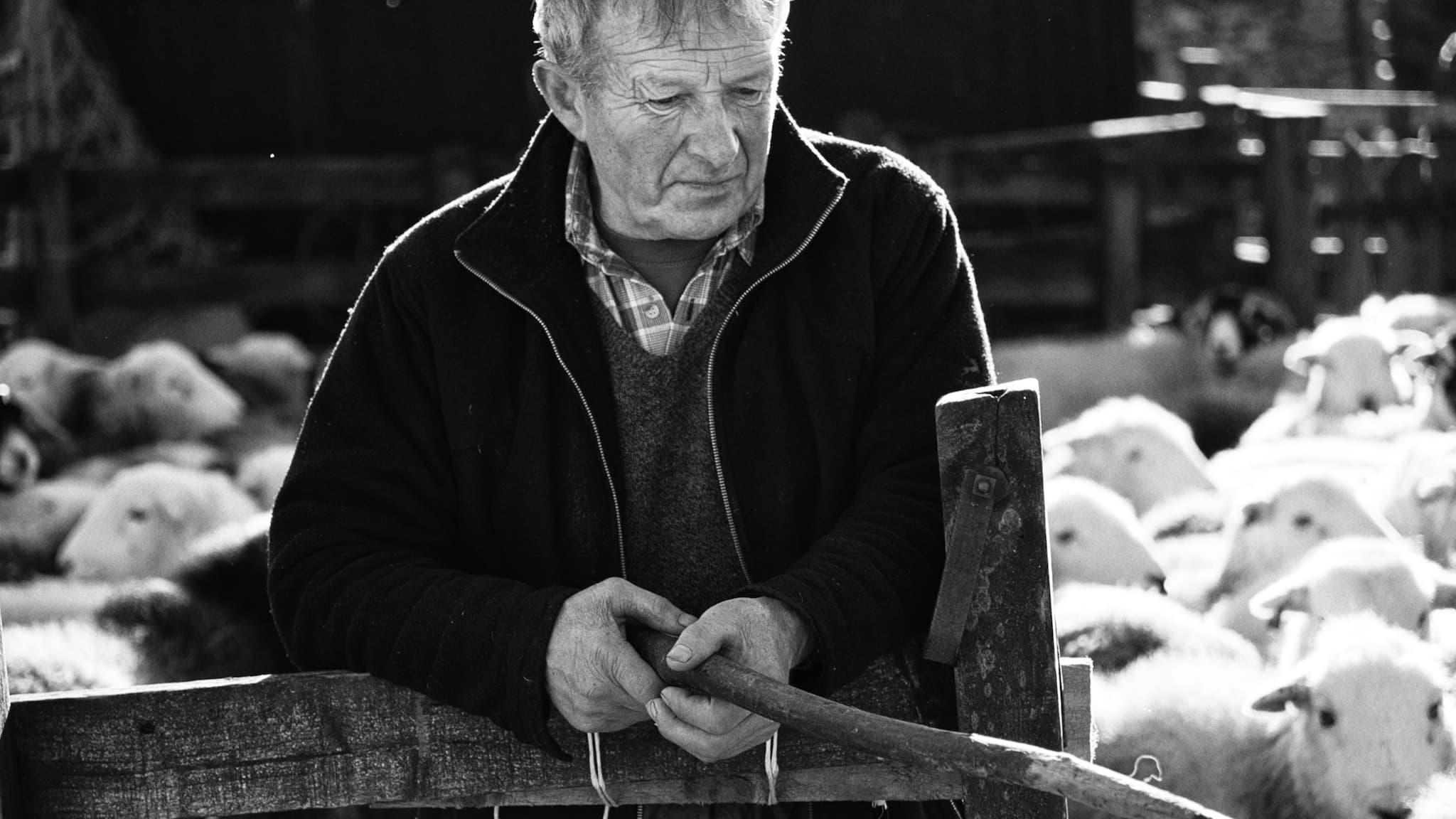
If you’d like to support Lake District farmers, the best thing to do is buy Herdwick products at fair trade prices. Each Herdysleep Mattress contains one whole Herdwick fleece, which is purchased directly from a cooperative of Lake District Herdwick farmers. Our Herdysleep Pillows also contain a blend of 100% British wool filling. Wool is a natural, sustainable material and its hypoallergenic and antibacterial properties make it the perfect choice for pillows.
Happily, you can also directly support the Lake District farmers directly by donating to the Herdyfund, a charitable fund started by Herdy and now managed by the Cumbria Community Foundation.
But above all, throughout these weeks, farmers are quietly excited by the promise of lambing time when, despite all the hard work, they will start to see the quality of the lambs and whether judgements about breeding were right or wrong.
Fingers crossed.
Lambing is due to start around April 1st.
Further reading: Lambing time on a Herdwick farm
Join the flock
Let's chat in the comments below or join the flock on our Facebook, Twitter, or Instagram, or email us.

